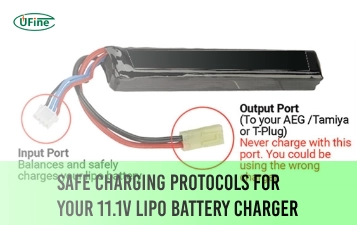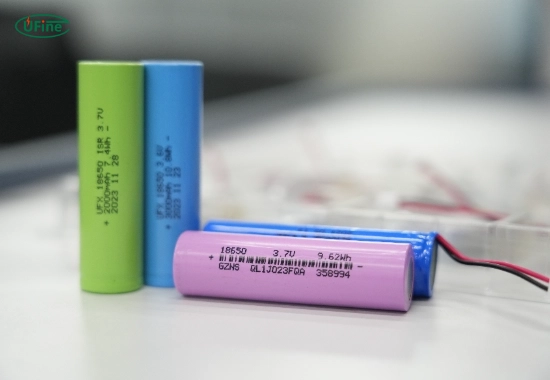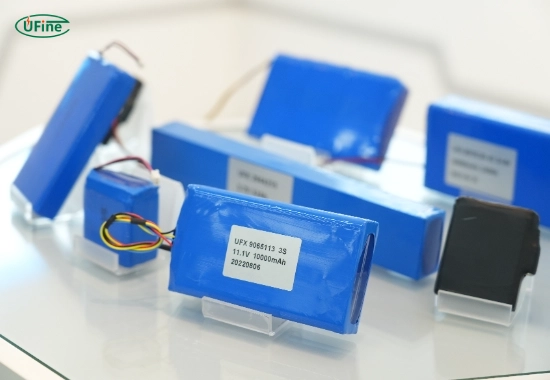Are you wondering how much 18650 batteries cost and where to find the best deals? Whether you’re a tech enthusiast looking for reliable power solutions or a business sourcing bulk orders, this guide will help you understand **18650 battery prices**, from the factors that influence costs to the best strategies for buying. Let’s explore how to get the best value for your needs.
Part 1. Factors influencing 18650 battery prices
- 1. Raw Materials and Manufacturing Costs
Raw Materials Impact
The 18650 battery uses lithium, cobalt, nickel, manganese, and graphite. These impact performance, longevity, and safety. Costs may change due to market demands, geopolitics, and new technologies introducing alternatives.
Lithium and Cobalt Influence
18650 batteries use lithium and cobalt. Lithium’s price changes due to mining, tech innovations, and geopolitics. Cobalt’s stability faces challenges due to ethical mining, impacting its availability and cost.
Nickel, Manganese, and Graphite Dynamics
Nickel, manganese, and graphite are crucial for enhancing batteries. They boost energy density and stability, particularly in the cathode. This improves overall battery performance. Manganese keeps the battery strong and handles temperature changes. Graphite, in the anode, stores energy—changes in their costs due to supply chain issues or new tech impact 18650 battery prices.
Manufacturing Complexity
Besides material costs, how batteries are made affects prices a lot. Fancy ways to put them together, coat the parts, and ensure they’re good cost money. Better ways to make batteries, like new tech and machines, can help, but starting with high-tech ways can make the final product cost more.
- 2. Brand and Quality
Brand Reputation and Market Perception
Established brands in the battery industry often carry a legacy of reliability, innovation, and quality assurance. This reputation built over time through consistent performance, safety standards, and customer satisfaction impacts pricing. Consumers often perceive these renowned brands as offering higher-quality products, which can justify a premium in pricing compared to lesser-known or generic brands.
R&D Investments and Technological Advancements
Leading brands invest heavily in research and development to introduce cutting-edge technologies and innovative battery features. These advancements enhance battery performance and contribute to higher manufacturing costs. Incorporating newer technologies, such as improved energy density, faster charging capabilities, or enhanced safety features, often justifies the higher price points of branded 18650 batteries.
Quality Assurance and Testing Standards
Renowned brands maintain stringent quality control measures and adhere to industry-standard testing protocols to ensure consistent product quality and safety. This meticulous approach toward quality assurance involves rigorous testing for capacity retention, cycle life, temperature tolerance, and safety features, which might increase production costs. However, it establishes consumer trust, allowing brands to command higher product prices.
Warranty and After-Sales Support
Another aspect influencing pricing is the warranty coverage, and after-sales support reputable brands offer. More extended warranty periods and robust customer support infrastructure contribute to perceived value, justifying the higher prices. Consumers are often willing to pay more for the assurance of reliable after-sales service and warranty coverage provided by established brands.
- 3. Market Demand and Competition
Consumer Demand Trends
Market demand serves as a pivotal force shaping the prices of 18650 batteries. Consumer preferences, influenced by technological advancements, evolving applications, and the increasing integration of battery-powered devices, dictate the demand for these batteries. Fluctuations in consumer demand based on emerging trends, such as electric vehicles, portable electronics, and renewable energy storage systems, directly impact pricing.
Supply and Demand Balance
The equilibrium between supply and demand within the 18650 battery market significantly affects prices. Shortages in raw materials, production bottlenecks, or unexpected surges in demand can create imbalances, leading to price spikes. Conversely, oversupply situations might drive prices down as manufacturers strive to remain competitive amidst excess inventory.
Competitive Landscape
Intense competition among battery manufacturers and sellers is a driving force in pricing strategies. Competitors vying for market share often use pricing wars, offering discounts or promotions to attract consumers. This competition exerts pricing pressure, compelling companies to adjust their prices to remain competitive without compromising profitability.
Regulatory Changes and Industry Standards
Changes in regulatory frameworks or industry standards can impact 18650 battery pricing. For instance, environmental regulations enforcing higher sustainability standards might increase production costs, subsequently affecting prices. Compliance with new safety or efficiency standards may also influence pricing strategies across the industry.
Part 2. Pricing range for 18650 battery
- 1. Entry-Level Budget Battery
Affordable Range:
Entry-level budget 18650 batteries fall within the more economical price range, appealing to consumers seeking cost-effective power solutions without significant financial investment.
Basic Functionalities:
These batteries offer fundamental features necessary for everyday use. They typically encompass standard capacity levels, basic safety measures, and moderate performance suitable for devices with lower power demands.
Simplified Materials and Manufacturing:
Manufacturers focus on cost-efficient materials and streamlined manufacturing processes to keep prices competitive. While meeting essential power requirements, these batteries exhibit slightly shorter lifespans or lower performance under heavy usage than higher-tier batteries.
Where to Find the Best Prices for 18650 Batteries?
Online Retailers: Popular platforms like Amazon and eBay often offer entry-level 18650 batteries for as low as $3 to $5 per unit. Bulk purchases from wholesalers or specialized battery websites may further reduce costs to under $3 per battery.
Specialized Stores: For mid-range and premium batteries, visiting specialized online battery stores ensures access to top brands and authentic products. Expect prices from $6 to $10 for mid-range batteries and $10 to $20 for premium models, depending on features and specifications.
Buying Tips:
-
- Always check for warranties and customer reviews to avoid counterfeit products.
- Consider the device’s power requirements to select the right battery category (entry-level, mid-range, or premium).
- Look out for seasonal discounts or promotions on online platforms to get better deals.
- 2. Mid-Range Battery
Balanced Pricing and Quality:
Mid-range 18650 batteries balance cost and performance, offering improved features without venturing into the higher price bracket. They cater to consumers looking for better quality without a substantial financial commitment.
Enhanced Features:
These batteries typically provide higher capacity, better energy retention, and improved performance compared to entry-level options. They suit devices requiring a more reliable power source at a reasonable price point.
Enhanced Durability and Performance:
Manufacturers invest in better-quality materials and slightly advanced manufacturing processes for mid-range batteries. This results in improved durability and better performance under moderate to heavy usage scenarios.
- 3. Premium and High-Performance Battery
Top-Tier Offerings:
Premium and high-performance 18650 batteries belong to the upper echelon regarding quality and capabilities, targeting users with specific demands for exceptional performance.
Cutting-Edge Features:
These batteries boast advanced features like extended lifespan, rapid charging capabilities, higher energy density, and superior safety mechanisms. They cater to power-intensive devices, demanding applications, or users prioritizing top-notch performance.
Innovative Materials and R&D Excellence:
Manufacturers invest heavily in utilizing top-quality materials, advanced manufacturing techniques, and robust research and development efforts to create batteries that perform and last for a long time.
Ready to buy 18650 batteries that suit your needs? Explore top deals and trusted sellers online to find authentic products at competitive prices. Whether you’re looking for budget-friendly options or premium performance, ensure your next purchase delivers value and reliability!
Part 3. FAQs
-
Why are 18650 batteries so expensive?
The cost of 18650 batteries can be influenced by factors like quality, brand, manufacturing process, technology used, safety features, and the materials utilized in their construction, such as high-quality cells and safety circuits. -
Where can I buy authentic 18650 batteries?
You can buy authentic 18650 batteries from trusted online platforms like Amazon, eBay, or specialized lithium battery manufacturers. Always verify seller ratings, customer reviews, and warranty information to avoid counterfeit products. Consider bulk purchases for better pricing if you’re sourcing for business needs. -
What should I check before buying an 18650 battery?
Before purchasing, ensure the battery matches your device’s specifications, including capacity (mAh), discharge rate, and size compatibility. Look for reputable brands and safety certifications to guarantee quality and performance. -
What is the highest output 18650 battery?
The highest output, 18650 batteries, usually have a high discharge rate, measured in amps, determining their ability to deliver power. Specific cells from reputable manufacturers with higher continuous discharge rates are considered to have high output. -
What are the most common materials used in manufacturing 18650 batteries?
The electrodes of 18650 batteries are commonly made of materials like lithium cobalt oxide (LiCoO2), lithium manganese oxide (LiMn2O4), lithium nickel manganese cobalt oxide (NMC), lithium iron phosphate (LiFePO4), along with electrolytes and separators. -
How does the capacity of an 18650 battery impact its price?
Generally, higher-capacity batteries (measured in mAh) tend to have higher prices due to their ability to store more energy. Still, the cost also depends on brand, quality, and other factors influencing performance. -
Can lower-priced 18650 batteries deliver comparable performance to higher-priced ones?
Lower-priced 18650 batteries offer similar specifications but lack consistency, longevity, safety features, or performance under load compared to higher-priced, quality batteries. It’s essential to consider reputable brands for reliable performance and safety.
Related Tags:
More Articles

Safe Charging Protocols for Your 11.1V LiPo Battery Charger
Safely charge your 11.1V LiPo battery by following proper rates, using safety tools, and avoiding common charging mistakes.
11.1 V LiPo Battery Airsoft: Boosting Field Performance
Upgrade your airsoft gun with an 11.1V LiPo battery for faster firing, longer runtime, and top-tier performance on the battlefield.
Batteries for Trolling Motors Lightweight vs. Leaf Blower Power
Explore the best lightweight trolling motor batteries and how they compare to leaf blower power for performance, portability, and runtime.
What Is a 2C Battery?
Learn what a 2C battery is, how C-rates affect performance, and how to calculate the number of batteries your device needs.
What Battery Does LED Strips Use?
Discover which batteries power LED strips best. Learn about voltage, capacity, battery types, and how to safely power your LED lighting projects.






